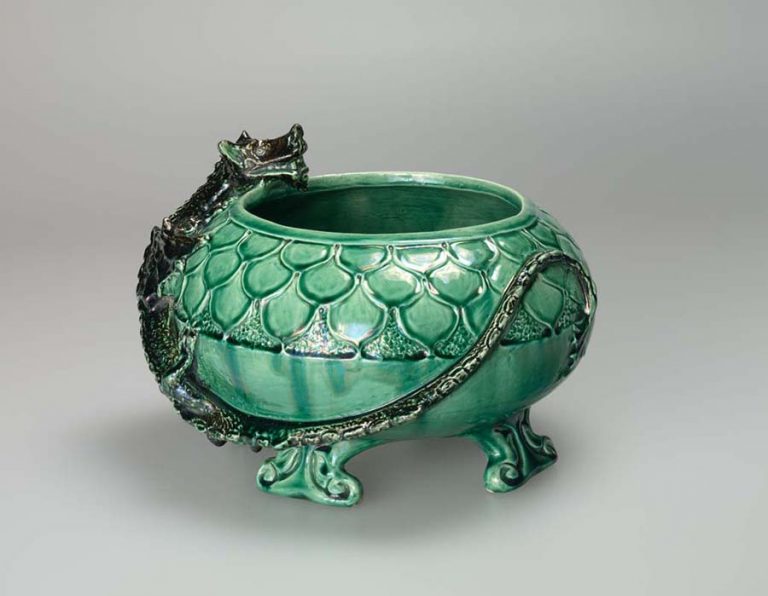We acknowledge the Traditional Owners of the land on which the Queensland Art Gallery | Gallery of Modern Art stands and recognise the creative contribution First Australians make to the art and culture of this country.

Evelyn Buggy / Australia 1901–84 / Dragon bowl 1940 / Earthenware, hand-built, flattened spherical bowl set on four scrolled feet. The rim decorated with a carved scale pattern and a modeled dragon with head overlapping the rim and extending around the body. Glazed green with the dragon in black / 21 x 28 x 25cm / Gift of Mrs S Gould, the artist’s daughter 1985 / Collection: Queensland Art Gallery | Gallery of Modern Art / © Estate of Evelyn Buggy
Evelyn BuggyDragon bowl 1940
Not Currently on Display
Evelyn Buggy’s green Dragon bowl is a stunning example of the work of pottery students from the renowned ‘Harvey School’. The bowl shares the distinctive qualities made manifest in the ceramics produced through L.J. Harvey’s school. This is evident in the hand-built form, glossy metallic glaze and decorative feet.
The uniformity of the scale pattern that surrounds the rim of the vessel creates a radial symmetry that demonstrates the discipline and control of a skilled potter. The dragon — a symbol and form that disrupts — is representative of wisdom and power that cannot be tamed. Buggy’s Dragon bowl displays her confidence in controlling the medium and her respect for the Asian philosophy and ceramic traditions that were of profound influence on Australian ceramics.
Evelyn Buggy was a dedicated potter. As an amateur working in her home studio in Greenslopes (a suburb of Brisbane), she and her husband Detective Senior-Sergeant John Francis Buggy built their own kiln out of bricks. The backyard kiln was utilised by pottery students who’s access to commercial firing was limited in the post-war economy. Along with building and maintaining a domestic kiln, Evelyn Buggy paid attention to each step in the production of her pottery, including preparing clay and mixing glazes.